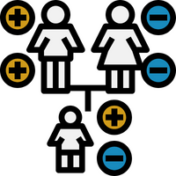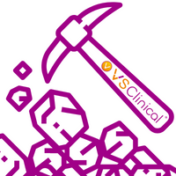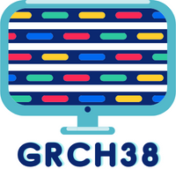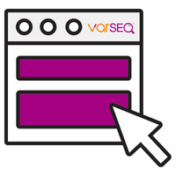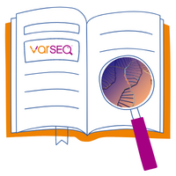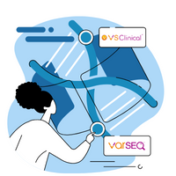This past month has produced some very interesting and diverse publications, all of which are using the VarSeq suite of products for whole exome & whole genome sequencing strategies. This month had it all: investigations of an understudied population in pharmacogenomic testing, the first-ever find with implications for Maine coon cats, and a puzzling case with a unique family displaying… Read more »
Thank you to those who attended our webcast on the user perspective of our automated AMP guidelines! Furthermore, let me express our appreciation for those particularly engaged users who posed some very thoughtful questions. While we weren’t able to answer all of them live, I hope to shed some light on some pertinent details of somatic analysis here. Let’s start… Read more »
Large-scale next-generation sequencing studies are becoming increasingly popular clinical and research tools. One enduring challenge for interpretion of these large amounts of data has been predicting the functional impact of genetic variants. Access to efficient computational tools for predicting the functional impact of variants is crucial to prioritizing the most potentially relevant variants in a dataset in a time-efficient manner…. Read more »
July brought about several customers having success with utilizing our VarSeq software. We saw publicized research regarding Axenfield-Reiger syndrome, Septo-Optic Dysplasia, and association of TGFBI variants. This range of customer usage displays the vast capabilities of VarSeq and the applications it can work with. Axenfeld-Rieger syndrome: more than meets the eye Background: Axenfeld-Rieger syndrome (ARS) is characterised by typical anterior segment… Read more »
Let’s say you are the director of a large lab, which is running tens or hundreds of standard NGS sample analyses per week. You have a number of employees with varying levels of analysis background, and you want to be sure everyone is running the analysis the same way. You are also concerned about updating catalogs that could create differences… Read more »
First, thank you to everyone who joined us for our recent webcast, Handling a Variety of CNV Caller Inputs with VarSeq. Also, we would like to thank those that Tweeted #CNVsupport @GoldenHelix or emailed us (mmarks@goldenhelix.com) to throw in their questions. This was a successful trial run, and we would like to continue engaging with our users through these outlets…. Read more »
Below is a list of highlighted peer-reviewed publications from this month. The Golden Helix team consistently enjoys seeing our software applications hard at work in the field, whether it is clinical whole-exome sequencing, targeted CNV identification, or genotype-phenotype correlations. Enjoy reading below how our suite of VarSeq, VSClinical, and VS-CNV continues to contribute to the progression of genetics research. Looking… Read more »
As we look back on May, I wanted to highlight a range of applications that our VarSeq suite is capable of and show the success of our partners. In these publications, our VarSeq suite is utilized for the analysis of whole-exome, clinical variant classification and association, and assisting in an NGS panel for clinical oncology use. VarSeq’s range and capability… Read more »
Advances in high-throughput sequencing have allowed us to be able to detect structural variants such as copy number variants in addition to small variants such as SNVs and indels. We provide users with an industry-leading CNV calling algorithm to detect CNVs directly from their next-generation sequencing data including whole genome, whole exome, and gene panel datasets, and also import CNVs… Read more »
In the era where cloud-based solutions are the default for the modern office, it may not be obvious why many laboratories and testing centers choose to host their data and analysis pipelines on-premises or on self-managed cloud services. In the recent webcast Evaluating Cloud vs On-Premises for NGS Clinical Workflows, I explored the topic of how to make infrastructure decisions… Read more »
The overall objective of Trio Analysis is to leverage inheritance data to determine the ancestry of variants in the proband, whether that be through transmission from the mother and father, or of de novo origin. We have previously covered family based analysis in this blog post and this webcast, but both of these sources have been based on variants brought… Read more »
While the interpretation of germline variants generally focuses on the pathogenicity of a variant for a specific disease, the interpretation of somatic variants is centered around each variant’s impact on clinical care. As a result, clinical trials play an important role in assessing the clinical significance of somatic biomarkers, with the AMP Guidelines assigning a higher level of evidence to… Read more »
Curated databases are a real time saver when compiling published evidence to support your variant evaluations and classifications. Leveraging the curated databases at your fingertips in our VSClinical variant interpretation hub is even more efficient. Not only does VSClinical provides users with automated variant classification for germline variants according to the ACMG guidelines and somatic variants according to the AMP… Read more »
For this month’s Customer Success blog, I decided to revisit some of my favorite studies that had previously been featured in years past. At the time we first highlighted the below publications, some of them were in pre-print and have since been accepted and published. What they all have in common is the implementation of our VSClinical software, which saved… Read more »
An under-utilized use of VarSeq is the ability of mining raw variant data in GenomeBrowse for relevant literature. By bringing in various public and private annotation sources, GenomeBrowse allows the user to interface with raw variant data in a compressed and manageable view. This blog will show you how to leverage these sources to power up your search for variant… Read more »
I’d like to take a moment to announce the release of updated gene tracks for the GRCh38 genome assembly! Gene annotation tracks are essential to all VarSeq projects and workflows. Whether your favorite gene track is Ensembl or RefSeq, both sources have been updated and released and can be used for variant annotation. These gene tracks are used to annotate… Read more »
When doing next-generation sequencing (NGS) analysis in VarSeq, the fundamental goal is to develop efficient ways to filter through your NGS data. If you are just getting started with Varseq, a pre-designed project template can really come in handy for variant filtering! This blog series will cover a number of template design recommendations for variant filtering on data types ranging… Read more »
We at Golden Helix thoroughly enjoy seeing our software being utilized to solve problems and assist in the diagnosis of hereditary diseases. It is gratifying to be notified of customer publications in which they are doing precisely this. While there have been numerous publications this month showcasing Golden Helix software being applied, below are a few that stuck out specifically…. Read more »
Although best known for its auto-generation of custom reports, VarSeq comes with a slew of options for exporting your data. In this blog, we will review some of the lesser-known methods for exporting your data into usable formats. These four export options can all be found under the Export tab at the upper left corner of your VarSeq interface (Figure… Read more »
Tumor profiling via next generation sequencing (NGS) often reveals secondary germline variants that may constitute important incidental findings. In May 2021, the American College of Medical Genetics and Genomics (ACMG) released an updated policy statement for reporting incidental findings in exome and genome sequencing data along with a corresponding list of genes. These recommendations state that laboratories should report pathogenic… Read more »










